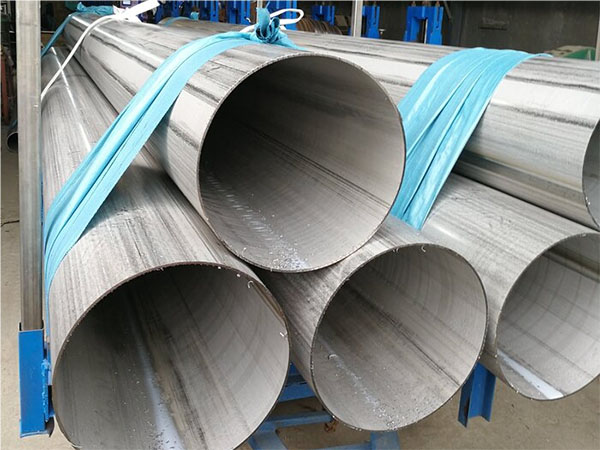Stainless steel welded steel pipe welding common operating problems
The quality control of
stainless steel welded steel pipe is an important link to ensure the welding performance and product service life. In the entire welding production process, the inspection of raw materials and the quality of welding operations are crucial. The following common problems and their causes and solutions are introduced in detail to help welding operators improve the technical level and improve the overall quality of welded steel pipes.

1. The weld is not qualified
The unqualified weld is due to the improper selection of welding process parameters (such as unreasonable current and voltage Settings) and unskilled operation, resulting in unstable welding process control, resulting in uneven shape of the weld, different levels, concave weld back, excessive weakening of the weld, resulting in insufficient strength of the weld.
Solution: Adjust welding current, voltage and other parameters to ensure good weld forming. Conduct technical training for welding operators to improve welding technical proficiency. Select the appropriate welding method and speed according to the material characteristics and welding position.
2. Incomplete welding or burn through
The main problem is that the weld is not fully melted, resulting in incomplete fusion between the metals. Single point or continuous perforation of the weld. The main reasons for incomplete welding are that the current is too small, cannot provide enough heat, the operation technology is not skilled, the welding speed is too fast or the butt gap is too small, the arc is too long or the weld is not aligned. The cause of burning through is because the current is too large, the melting pool temperature is too high, the welding wire is not added in time, the welding speed is too slow or the butt gap is too large.
Solution: Increase the current appropriately, ensure the penetration depth, and control the welding heat input. Adjust welding speed and butt clearance to ensure uniform weld. In case of incomplete penetration, repair welding in time to avoid weld defects affecting strength.
3. Cracks and pores
The cracks are mainly divided into hot cracks and cold cracks. The hot cracks usually appear along the grain boundary, and the cold cracks appear as transgranular cracks. There are pores in the weld or molten pool, and the internal structure of the weld is not dense.
The main reason for these problems is that during the solidification process of liquid metal, oxidation cracks appear on the boundary crystal, resulting in hot cracks, and cold cracks are caused by excessive welding shrinkage stress, and the material contains hydrogen or is easy to harden. The reason for the porosity is because the quality of the welding wire is not up to standard, and the surface of the pipeline has oil, oxide or rust. The welding environment is humid, the purity of the protective gas is insufficient or the protective gas flow is unstable. Or the material has more impurities, and the high temperature residence time is too long, resulting in overheating and oxidation.
Solution: The solution to the crack is to select the appropriate welding material, optimize the welding process parameters, and avoid overheating. Control welding stress and reduce the risk of cracking by segmental welding or preheating. The solution to the porosity is to use high-quality welding wire to clean the dirt and oxide on the surface of the welding material. Ensure that the welding environment is dry, use high purity protective gas and stabilize the airflow. Control the bath temperature and welding time to avoid excessive high temperature stay.
Summary
In the production process of stainless steel welded steel pipes, the core of quality control is to strictly inspect raw materials and welding processes, focusing on weld molding and welding defects. Through reasonable selection of process parameters, improving the skills of operators and improving the welding environment, problems such as unqualified welds, incomplete welding or burning through, cracks and pores can be effectively avoided, so as to ensure the quality and service life of welded steel pipes.
